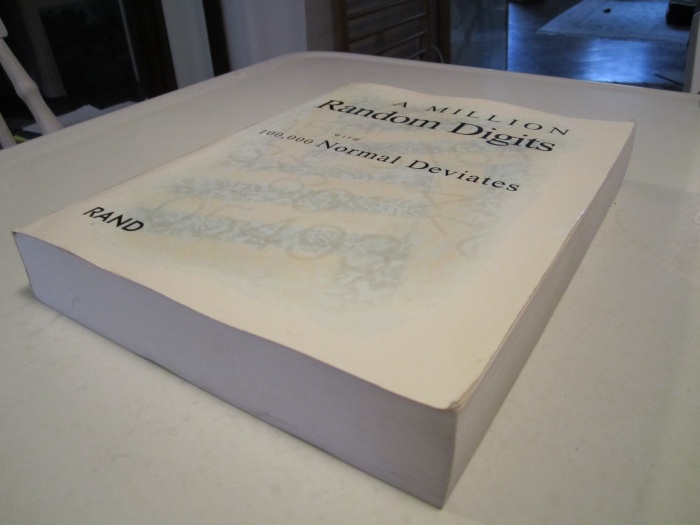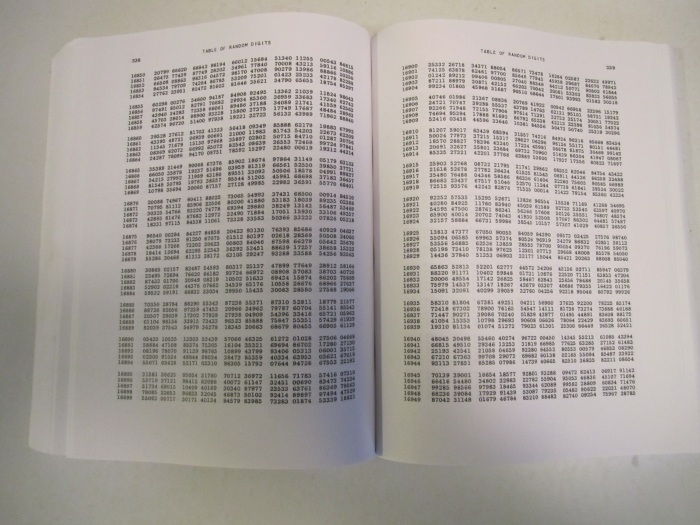A Million Random Digits with 100,000 Normal Deviates
First published for the RAND Corporation in 1955 by the Free Press of Glencoe, Illinois, A Million Random Digits with 100,000 Normal Deviates contains exactly what you’d suspect: an extremely large table of random digits. One can hardly resist the impulse to open this hefty volume, but good luck actually reading it. Viz.:
Production of the so-called RAND Book began at the Los Alamos National Laboratory in 1947. Scientists there were developing a new branch of mathematics called the Monte Carlo Method, which uses random sampling to model complex systems. As it happened, the main complex system in need of modeling was the chaotic reaction inside the thermonuclear weapons that RAND scientists were then helping to design at Los Alamos. Of course, this is one of several important random number tables, but its connection with Cold-War weaponization is particularly interesting. Stanislaw Ulam is credited with the initial idea for Monte Carlo mathematics, and he developed it in collaboration with John von Neumann and the astoundingly named Nicholas Metropolis. Enrico Fermi had already used random sampling techniques in some of his experiments at the University of Chicago in the 1930s, but only in the late 1940s and 1950s at Los Alamos would they become formalized and see routine use. As the Introduction to the first edition puts it, “the applications required a large supply of random digits or normal deviates of high quality,” and the RAND Book was produced to answer this need. It was created using an electronic roulette wheel in conjunction with a random-frequency pulse. The random pulse likely was a gas noise tube, though as Tom Jennings’s wonderful reconstruction proves, a geiger counter trained on uranium ore would have worked equally well—while also lending the whole affair a delightful circularity. (Jennings has previously reviewed the first edition of the RAND Book.) Monte Carlo mathematics has since become important for complex systems theory, chaos math, environmental science, and a variety of other disciplines, and the RAND Book remains among the most trusted and widely used tables of random digits. A copy is now available online, but for those who prefer to feel this volume’s heft in their hot little hands, the RAND Corporation graciously issued a second edition in 2001, available on Amazon. The tables themselves remain unchanged, of course—in fact, like the first edition, they were not conventionally typeset but reproduced directly from computer printouts, by photo-offset, in order to avoid typographical errors. The new edition does, however, provide an updated Foreword in celebration of this very strange book. Also available is a thrilling sequel
by David Dubowski, who uses computer algorithms to provide an equally large table, now with more perfectly random distribution—whatever that means.


Leave a comment